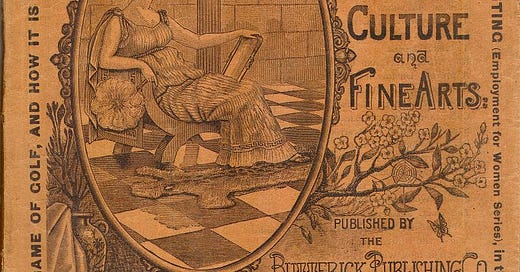I have been thinking a great deal lately about antique ladies’ magazines. In fact I have a small starter collection of these, which comprises at the time of writing a handful of publications ranging from the 1830s to the 1920s. They vary somewhat in their focus; some are predominantly concerned with fiction, poetry and music, while others are geared towards the young lady determined to copy the Paris fashions of her day at a fraction of the Paris cost. The magazines from the 1830s, in particular, include many political articles, including in one instance a passionate argument that women should retain control of their own finances upon marriage. However, in all there is a certain variety of interest which is very appealing, particularly in the combination of poetry, fiction and music alongside more practical concerns and “fripperies”. Today one must “take in” a literary journal, a newspaper, and fashion, crafting and interior decorating magazines if one wishes to attain the same level of variety—and even then there will be no music.
This strikes me as all too similar to monocultures in agriculture. By plowing the same soil, year in year out, and seeding the same crop, one is left with no humus and corn of poor nutritive quality. I believe we can see a similar result in some of our more single-minded periodicals: by circling the same interest over and over itself, it becomes starved of all deeper meaning and severed from its connections to other aspects of our world and our lives.
Certainly the composition of magazines, antique or otherwise, is not a matter for great public concern—but I do believe a little less monomania and a little more cultivation of hodge-podge humus can reap benefits which may be extrapolated from the trivial, even to the most grand and serious of projects.




